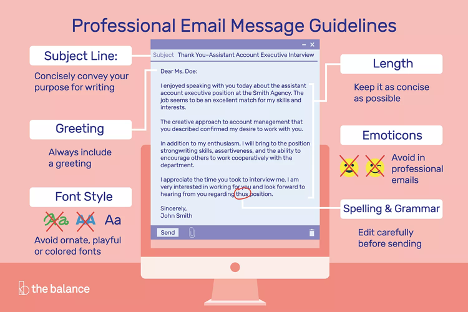Subject: Mastering the Art of Effective Email Communication
Hey there!
If there’s one thing we can all agree on, it’s that our inboxes have become a virtual jungle. With every new email vying for our attention, it’s crucial to make sure our own messages stand out and communicate effectively. So, whether you’re a business professional, a student, or even just someone who wants to improve their digital communication skills, this blog post is for you!
In a world where face-to-face interactions are becoming increasingly rare, writing emails has become a vital means of communication. But let’s face it, writing effective emails can be quite challenging. How exactly do you get your point across concisely, yet make it engaging and impactful? Well, fear not, my friend, because I’m here to share some insights and tips to help you master the art of effective email communication.
First things first, let’s talk about clarity. This is the foundation of any effective email. Consider the purpose of your email and ensure that your message is clear and concise. Nobody has time to decipher lengthy, convoluted emails, right? So, start by organizing your thoughts before you begin typing, making sure to include only the necessary information. Remember, brevity is key!
Next, let’s dive into the importance of personalization. People appreciate personalized emails that speak directly to them. So, whenever possible, address the recipient by their name and show genuine interest. Avoid sounding generic or robotic. Adding a touch of personalization helps establish a connection and encourages a more open and responsive dialogue.
Now, let’s focus on subject lines. Think of them as email gatekeepers, determining whether your message gets opened or ignored. A compelling subject line will entice the recipient to click on your email. Be creative, but also straightforward. Avoid using vague or misleading subject lines. Nobody likes an email that promises one thing but delivers another. Be genuine and honest; it goes a long way!
Moving on, let’s discuss tone and language. When writing emails, it’s crucial to strike a balance between professionalism and friendliness. Tailor your tone to match the context and your relationship with the recipient. Avoid being overly formal or too casual, as it can create misinterpretation or misunderstandings. Remember, effective communication is about finding that sweet spot where your message is both personal and informative.
Now, let’s talk about formatting. Trust me, we all love well-structured emails. Use paragraphs to break down your thoughts, making it easier for your recipient to navigate through your message. Bullet points and numbered lists also add clarity and make your email more scannable. Use a professional font, adequate spacing, and stay clear of funky formatting. Reading an email should be a pleasure, not a puzzle!
Furthermore, let’s discuss the menace of email overload. We all know the feeling of being buried under piles of emails. So, when writing an email, respect the recipient’s time by getting straight to the point. If necessary, use bullet points or subheadings to highlight important information. Don’t add unnecessary fluff or attachments that could clog up their inbox. Remember, an effective email is concise and respects the recipient’s time.
One critical aspect of effective email communication is proofreading. Nothing is more embarrassing than sending an email filled with typos or grammatical errors. Take the time to carefully read through your email before hitting that send button. Use tools like spell-check and grammar-check to catch any mistakes. Trust me; a polished email enhances your credibility and professionalism.
Lastly, let’s touch upon email etiquette. It’s essential to understand and follow proper email etiquette to maintain a positive and respectful digital conversation. Always reply promptly, even if it’s just to acknowledge receiving the email. Use appropriate greetings and sign-offs, and be mindful of your use of exclamation marks and emojis, as they may not be suitable in a professional context. Respect the recipient’s privacy by refraining from sharing their email addresses without permission, and always use BCC (blind carbon copy) if sending group emails to protect everyone’s privacy.
By now, dear friend, you are well-equipped with the knowledge and tips needed to become a master of effective email communication. Remember, clarity, personalization, engaging subject lines, appropriate tone, and proper formatting are your secret weapons. Use them wisely, and you’ll notice a positive change in your email interactions.
So go forth and conquer that inbox jungle with your newfound skills! Write those emails with impact, and watch as your message resonates, connects, and leaves a lasting impression.
Until next time,
[Your Name]
